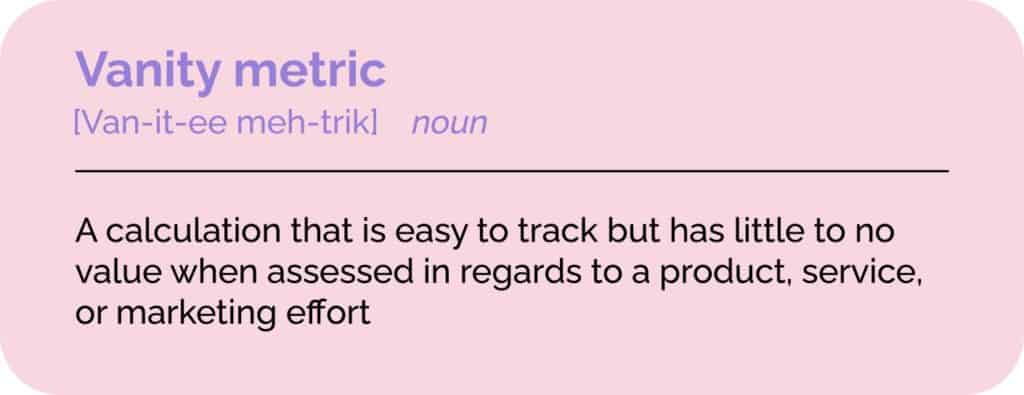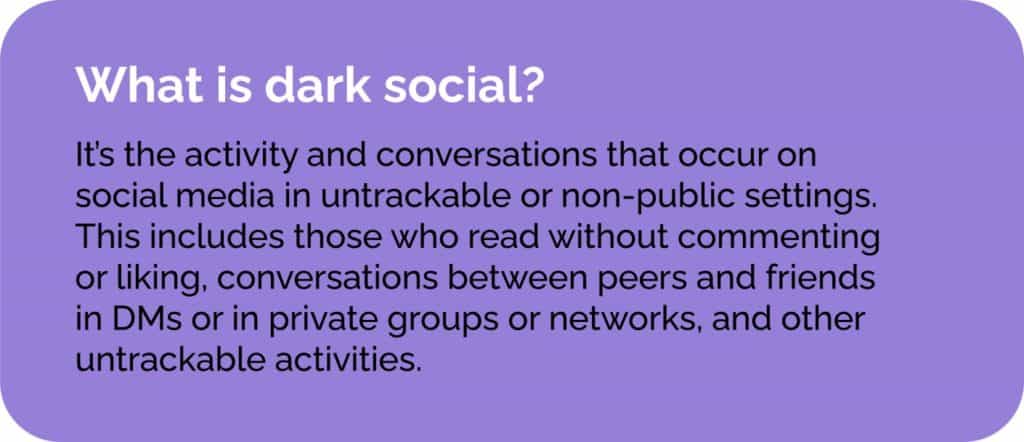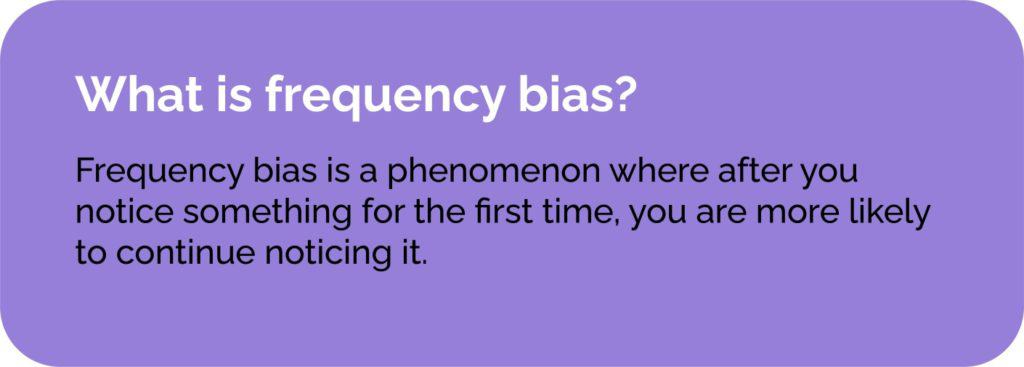Businesses and the marketers that work for them are often focused on how to measure success—after all, we want to know that our marketing investment is reaping strong returns. Key Performance Indicators (KPIs) are top priority and considered hard evidence that a campaign or strategy is working. According to KPI.org, there are three major KPI concepts that you need to know:
- Targets: the desired level of performance
- Leading Indicators: precursors of future success
- Lagging Indicators: how successful the organization was at achieving results in the past.
Good KPIs are balanced between leading indicators and lagging indicators, and they measure—objectively—the desired level of performance.
For example, many consider click-through rates (CTRs) to be a helpful KPI, but when you really think about it, it’s actually not a precursor of future success (your leading indicator), nor is it a measure of how successful the organization was at achieving results in the past (your lagging indicator).
So what is it?
Some may call it a vanity metric.
Vanity metric
[Van-it-ee meh-trik] noun
A calculation that is easy to track but has little to no value when assessed in regard to a product, service, or marketing effort

Other marketers believe that it’s worth tracking but acknowledge that there are plenty of unknowns that make the measurement… well, iffy.
Here’s what we do know: How many clicks occurred over a certain period of time.
Here’s what we don’t know:
- Whether the click came from a human or a bot
Note: Nearly half of all internet traffic is due to bots, and some estimate that approximately 20% of all PPC clicks are fraudulent.
- Whether the click was due to genuine interest, or just curiosity
- Whether a click has any correlation with a conversion
On top of these unknowns, most studies show that very few people actually ever click on ads. Business Insider did a whole story about it, citing that you are more likely to win the lottery or survive a plane crash than click on a banner ad.
So if very few people actually click on ads, and we know that many of the clicks that do occur are from bots, and we don’t know if there is any correlation between a click and actual interest—let alone conversion—why do we measure them?
Because they’re easy to measure.
It’s insanely easy to count clicks, and that makes it a really satisfying metric to pull, especially when your clicks are up.
Unfortunately, just because something is measurable doesn’t mean it’s meaningful.
The truth is—meaningful engagement can be hard to measure.
This is partly because so much of the most meaningful type of engagement—the engagement that really leads to conversions—occurs on dark social.
Dark Social
What is dark social? It’s the activity and conversations that occur on social media in untrackable or non-public settings. This includes those who read without commenting or liking, conversations between peers and friends in DMs or in private groups or networks, and other untrackable activities.

While measuring data from dark social activity is nearly impossible, there are a few meaningful metrics—not just easily measurable metrics—that we do track.
Related post: Why Click-Through Rate Doesn’t Matter, and the KPIs Brand Marketers Should Actually Care About
Share of Voice
Share of voice (SOV) is the share of the market that your brand owns. In the past, it was calculating how much of the total advertising in a single industry your company owned. The higher the number, the larger your share of voice.
Now, in the digital era, share of voice is more complicated because it includes earned media (PR), as well as paid advertising, and can extend into how prevalent your brand is on social media (followers, impressions, and so on) too.
When you compare your company’s marketing and B2B PR efforts in your industry to the standard, you can determine your share of the market in comparison to your competitors.
Think of it this way: there are plenty of companies that make Ketchup (and some even call it Catsup…) but when we think of the red-tomato-based condiment, most of us probably envision a Heinz bottle. Why? Because they have a huge share of voice in the condiment space and have for a long time.
Having a large share of voice ties directly to the Baader–Meinhof phenomenon—more commonly called frequency bias.
Frequency Bias
What is frequency bias? Frequency bias is a phenomenon where after you notice something for the first time, you are more likely to continue noticing it.

As marketers, building frequency is key for two reasons:
- Frequency bias—or high visibility—creates familiarity. Things that are familiar to us feel safe, and when something feels safe, we are more likely to trust it. The same way you feel comfortable around the people you are familiar with or in the places you frequent, we build a certain comfort with brands that we see regularly. We assume that because we see the brand everywhere, it must be the most credible, so we choose it above other lesser-known brands.
- Frequency bias increases brand reach—another meaningful metric.
Brand reach
Brand reach is the total number of people who see your content, regardless of their engagement with it. Think of it as an “oldie but a goodie” like a billboard—there is no way to click on it, but people still see it and register it, and it still generates reach for your brand. If you have a good billboard on a busy highway, your chances of reaching more potential customers are higher than a billboard in a less busy area.
According to Forrester, prospects need 27 touchpoints on average before converting. That means that your brand needs to be in front of their eyes approximately 27 times throughout the buyer journey. These 27 checkpoints help reinforce frequency bias, which builds trust and also impacts the conversations happening on dark social.
So even if they aren’t clicking on your paid ads, there is a value in having your name, messaging, brand imagery, or video in front of your audience.
So let’s go back to our meaningful KPI vocabulary: targets, leading indicators, and lagging indicators. Share of voice and brand reach are both excellent leading indicators of marketing because they are precursors of future success that can be correlated meaningfully with actual measures of success (e.g., your lagging indicators), showing how your marketing tactics has reached its targets. These two measures can also differentiate between sites that are creating more or fewer target outcomes for your brand, and you can know where to spend your money more efficiently.
So yeah, there are some meaningful measurements.
But here’s the hard truth: not everything is measurable.
Moving past measurements
It’s time for marketers to acknowledge that sometimes placing your bets on meaning means accepting that you can’t measure every aspect of your strategy.
It can be scary to take a risk and focus your efforts on something that you can’t “prove” is effective—especially when you have to answer to your CEO in regard to how your marketing and PR dollars are being spent.
But what we do know—and have the data to back—is that meaningful matters.
You can track all the clicks in the world, but if people don’t build a meaningful connection with your brand, it won’t matter. Humans thrive on building meaningful relationships, which means stepping past measurements and creating meaning by focusing on customer wants and needs. And here’s what people really want, according to the data:
- People want to be understood. 70% of buying experiences are based on how customers feel a brand understands them (McKinsey).
- They want to know how your brand relates to them personally. 79% of people want a personalized experience from the brands they interact with.
- They want to know that companies truly care about earning their business. 79% of people only buy from brands that prove they care about earning their customer’s business (Wunderman).
It’s time for marketers to focus their attention on bringing meaningful content, experiences, and engagement to their audience. It may not be measurable, but as leads increase and sales are made, the evidence will speak for itself.
Need help creating meaningful marketing campaigns? We’re happy to help.









